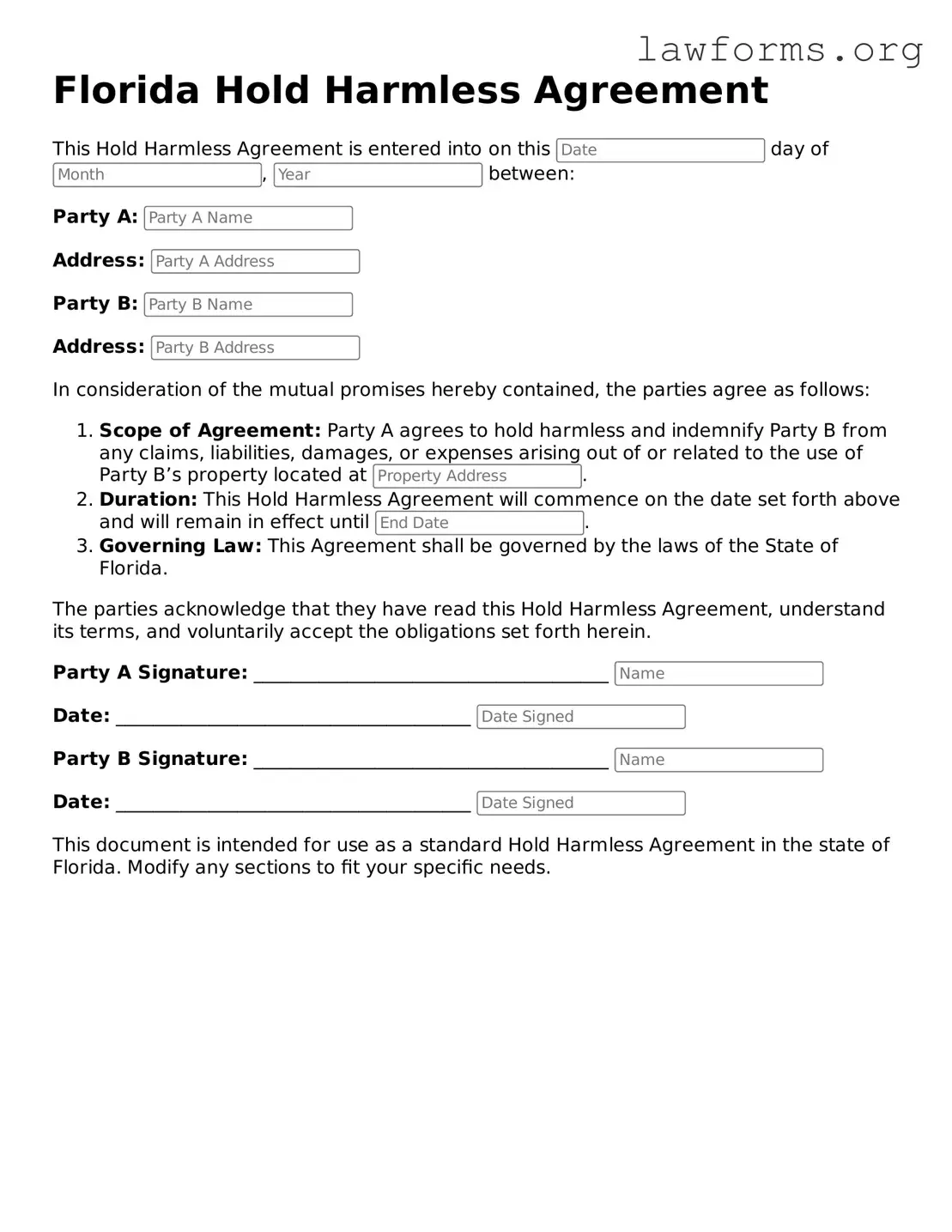Attorney-Approved Hold Harmless Agreement Template for the State of Florida
The Florida Hold Harmless Agreement is a legal document designed to protect one party from liability for any damages or injuries that may occur during a specific activity or event. By signing this agreement, individuals or organizations agree to assume responsibility for any risks involved, ensuring that the other party is not held accountable. Understanding this form is crucial for anyone looking to safeguard their interests in various situations.
Ready to take the next step? Fill out the form by clicking the button below.
Customize Document Online
